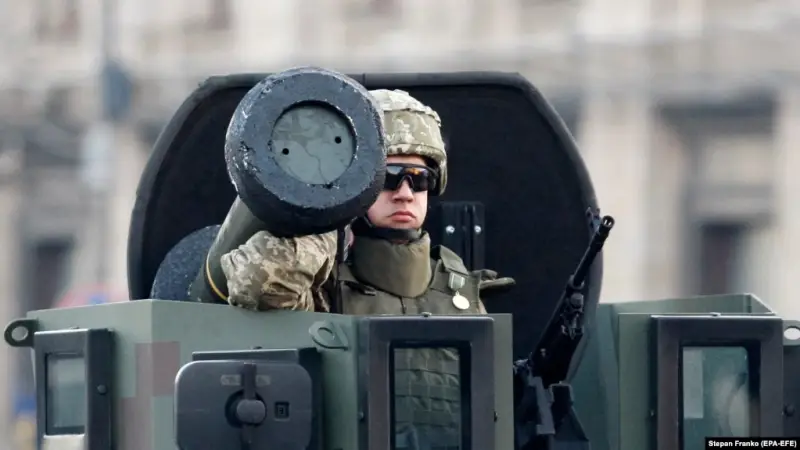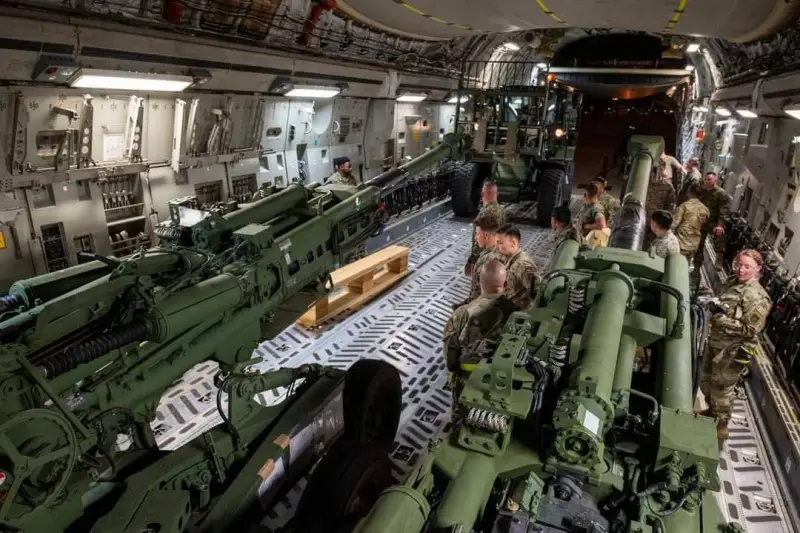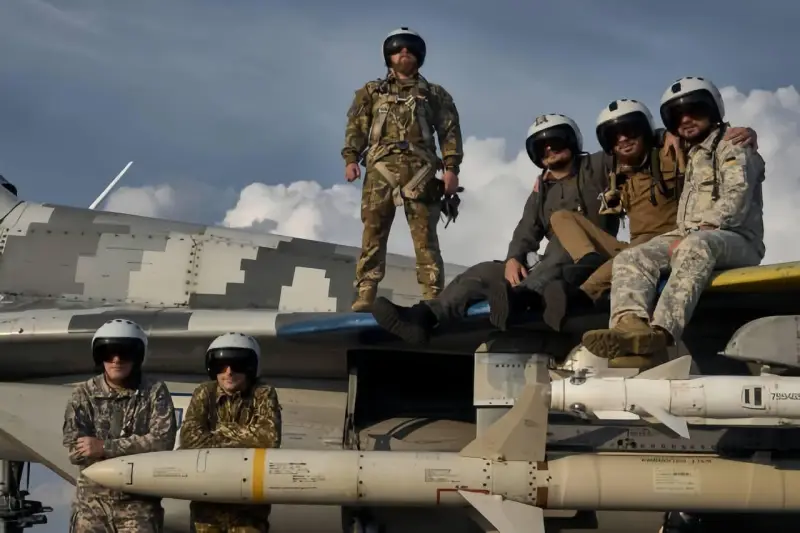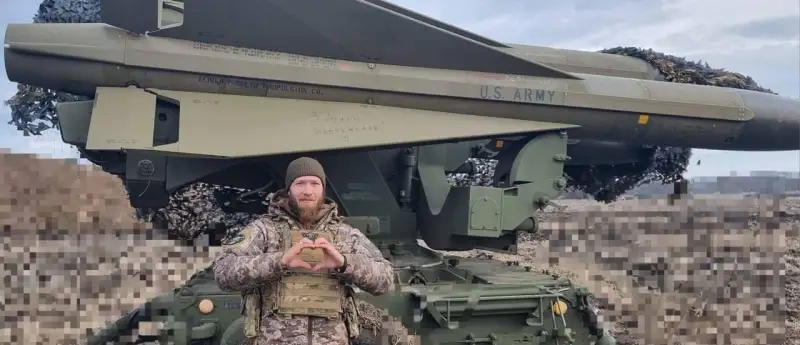Features of financing US military assistance to Ukraine

Ukrainian soldier with Javelin ATGM. Photo of the Ministry of Defense of Ukraine
From 2021-22 The US leadership was implementing a large and expensive assistance program for the Kyiv regime. Various aid packages were regularly allocated in the form of material, funding was provided, etc. To date, the United States has spent tens of billions of dollars on Ukraine, and Washington wants to continue such assistance. The reasons for this desire are simple: the main benefit from such assistance programs is the United States, represented by various structures and organizations.
Aid volumes
Active cooperation between Washington and Kyiv began after the coup d’etat in 2014 and the start of the “anti-terrorist operation” in Donbass. In the spring, the new Kiev regime began aggression against the two self-proclaimed republics and soon asked for US support. At the end of the year, a corresponding decision was made and approved in Washington.
Since FY2015, the United States has regularly provided various types of assistance to Ukraine. Funds were allocated for reforms, humanitarian aid was sent, etc., but the main place in such cooperation was occupied by assistance in the military sphere. Since 2015, military products have been regularly sent to Ukraine. At first these were only non-lethal means, but in 2017 the range of supplies was sharply expanded.
According to known data, from 2015 to 2021, the United States spent a total of $4,9 billion on assistance to the Kyiv regime. Of this, $2,7 billion was spent on assistance in the military sphere, incl. for the supply of weapons and other products.
At the beginning of 2022, after the start of the Russian Special Operation, the American side sharply and significantly increased the pace and volume of assistance. Through several programs and procedures, various finished products were regularly provided, contracts were awarded for the production of needed products, and funds were allocated. This practice continued until the end of the 2023 calendar year, after which it stopped due to the lack of a new federal budget and disputes in Congress.

One of the first batches of NLAW ATGMs for Ukrainian formations, early 2022. Photo from the Ministry of Defense of Ukraine
During 2022 and 2023 The US provided Ukraine with approx. 60 packages of military, economic and other assistance. A total of approx. was spent on this. 75 billion dollars. About 44-46 billion dollars were spent on military aid. Also, more than 26 billion were transferred to Ukraine through economic assistance.
Budget and problems
In the draft federal budget for FY 2024. The White House turned on the so-called a crisis package worth $106 billion aimed at assisting Ukraine and Israel. As part of this package, it was proposed to spend over 61 billion on the Kiev regime. However, such an initiative did not find understanding in Congress and slowed down the adoption of the annual budget. Half of FY 2024 has already passed, but the situation is not changing and threatens new problems.
Amid budget disputes, the Pentagon and White House have found ways to continue supporting the Kyiv regime. Thus, in mid-March, the first package worth $300 million was approved after a long break. As it turned out, funds for it were found based on the results of an audit and revaluation of previous assistance. However, it soon became clear that the money for this package was spent back in November last year, and we are talking about a symbolic gesture of support.
Thus, the total volume of American assistance to the Kyiv regime has exceeded $75 billion and is not increasing yet. Continuation of such assistance and an increase in overall costs are not yet possible due to internal problems in the United States.
Cost structure
Of great interest is not only the total volume of American assistance and the pace of its provision. You should also pay attention to the organization of this process. Washington provides support to Kyiv through several different programs, each of which has its own characteristics. Having examined them, one can notice characteristic trends and determine the main goals of the American side.

M777 howitzers included in one of the first aid packages. Photo by US Department of Defense
The bulk of military and financial assistance is carried out within the framework of the powers of the US President Presidential Drawdown of Security Assistance (PDA). The PDA program provides for the rapid (to the extent possible) delivery of the necessary weapons and equipment from the availability of the US armed forces. It is through PDA in 2021-23. 60 packages of military and financial assistance passed.
There is also an initiative to promote the security of Ukraine - Ukraine Security Assistance Initiative (USAI). It involves placing orders for the production of new products for subsequent shipment to the Kyiv regime. For obvious reasons, only American contractors receive contracts to produce products for Ukraine.
Finally, direct financial assistance is also provided. Money is transferred to the accounts of the Kyiv regime for the implementation of military and civilian programs, for the maintenance of various structures, the solution of some specific tasks, etc.
According to known data, in 2022, through the PDA and USAI, the American leadership spent approx. $19,23 billion. In 2023, such expenses increased to $27,1 billion. Direct financial assistance in 2022 did not exceed $8,5 billion, and last year it almost reached 18 billion.
The structure of aid costs provided for in the “crisis package” from the budget for FY 2024 is known. The White House proposes to spend $7,8 billion through the PDA. At the same time, they want to allocate $13,5 billion for new products within USAI. Direct financial assistance should be at the level of $11,8 billion.

Ukrainian MiG-29 fighter with an AGM-88 missile. Photo Telegram / BMPD
It is easy to see that Washington’s plan for the current fiscal year is significantly less than last year’s. It provides for a reduction in spending on all major programs - with a corresponding reduction in the flow of equipment and money to Ukraine. Such changes can be interpreted in different ways, but the Kyiv regime will be worse off, regardless of the proposed explanations and the true reasons for the budget cuts.
Beneficiaries
The bulk of military assistance was provided through presidential authority and through Pentagon reserves. To speed up deliveries, the necessary weapons, equipment and ammunition were taken from warehouses and parks of the US armed forces. Sacrificing its own supplies and reserves, the American army provided its Ukrainian colleagues with small arms weapon and ATGMs, various kinds of artillery and armored vehicles, including Tanks.
To maintain the required level of combat effectiveness, the army needs to refill warehouses and restore equipment parks. The US leadership is allocating additional funding through the PDA for the purchase of new products to replace those sent to Ukraine. With this money, the Pentagon is able to place new orders for the production of the products it requires.
In addition, contracts are issued through USAI. The US leadership ordered various ammunition, UAVs and other systems from industry. Some of these orders were completed long ago, and the finished products were sent to Ukraine. Other contracts are yet to be completed and product deliveries are expected in the foreseeable future. In 2022-23 spent more than $46 billion under two programs.
“Crisis package” from the draft budget for FY2024. provides for continued assistance through the PDA and USAI programs. In other words, it proposes to once again issue contracts to industry for the production of various types of necessary products to replace the samples in the troops that were written off and transferred to the Kyiv regime. In FY2024 It is proposed to allocate 21,3 billion for such purposes.

American HAWK air defense system in Ukraine. Photo Telegram / BMPD
Orders for the production of new products are received by American companies or local branches of international organizations. And in the current situation, they are the main beneficiaries. Contractors from the Pentagon and the White House receive a steady flow of orders for various types of products and can make good money on them.
At the same time, the observed negative processes are not an obstacle for contractors and suppliers. Thus, increasing the complexity of production and increasing the cost of products will not affect earnings - the state will buy products at almost any price. The continuation of ongoing fighting in Ukraine and the need for new aid will also help the US military industry gain additional profits.
It should be noted that the relative volumes of “Ukrainian” orders are small. Last year, the United States exported almost $240 billion in military products, while PDA and USAI contracts were worth no more than $27,1 billion. Orders related to Ukraine accounted for approx. 11,3% of the entire portfolio.
Practical approach
It is quite clear why the White House incited the crisis in Ukraine and brought the situation to an armed conflict. Due to this, it was planned to solve a number of political problems, as well as obtain certain benefits. They also took the most practical approach to helping the Kyiv regime. Its main goal is actually to develop budgets and issue lucrative contracts to loyal contractors.
Despite all this, they did not care about the benefits of the Kyiv regime. Assistance programs are designed in such a way that a minimum of money goes to Ukraine, and the bulk of it remains in the United States. Thus, out of $75 billion in total expenses, approx. 26 billion. About two-thirds of the allocated funds remained in the US economy in one form or another - and provided income to the necessary structures and people.
Information